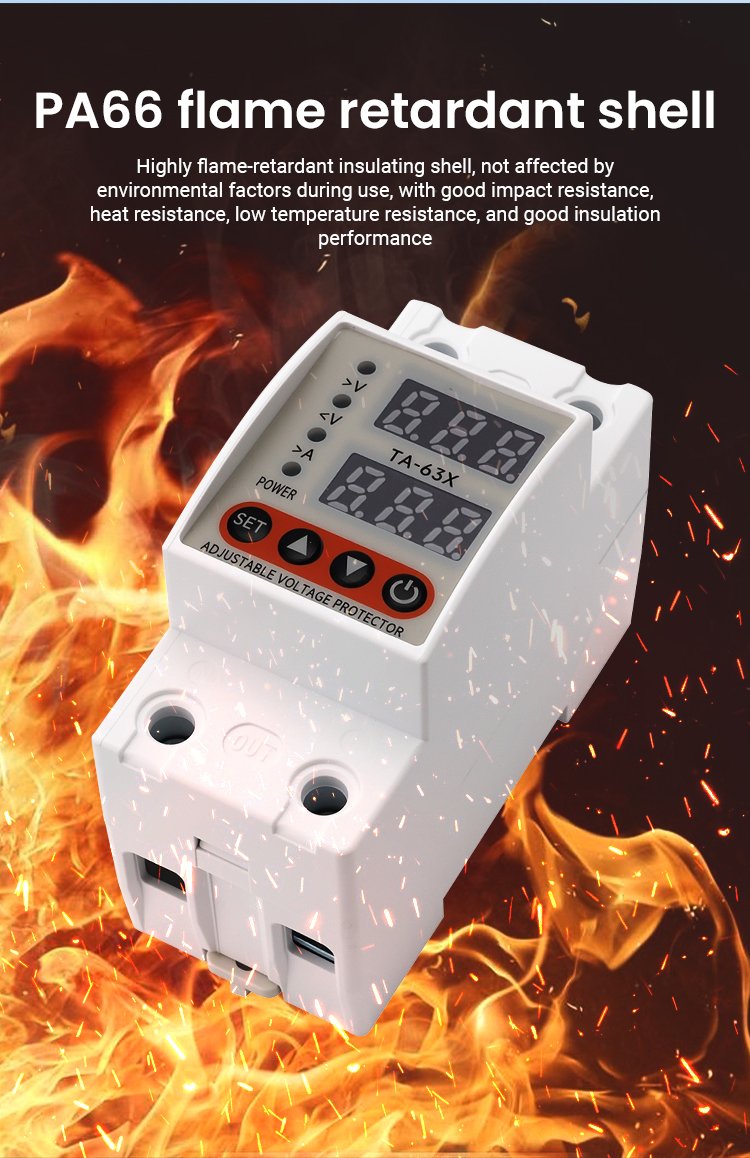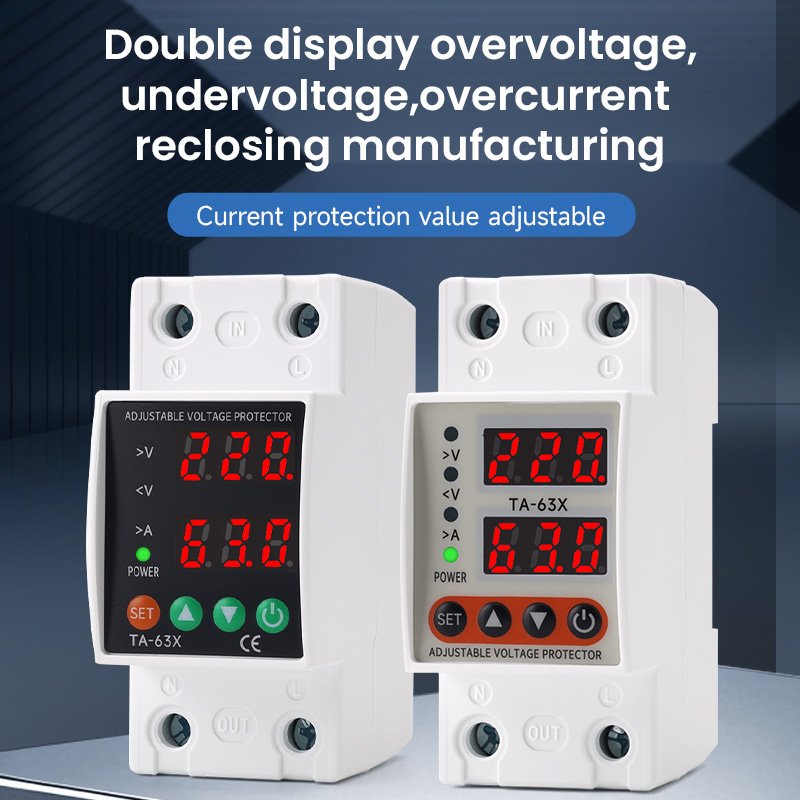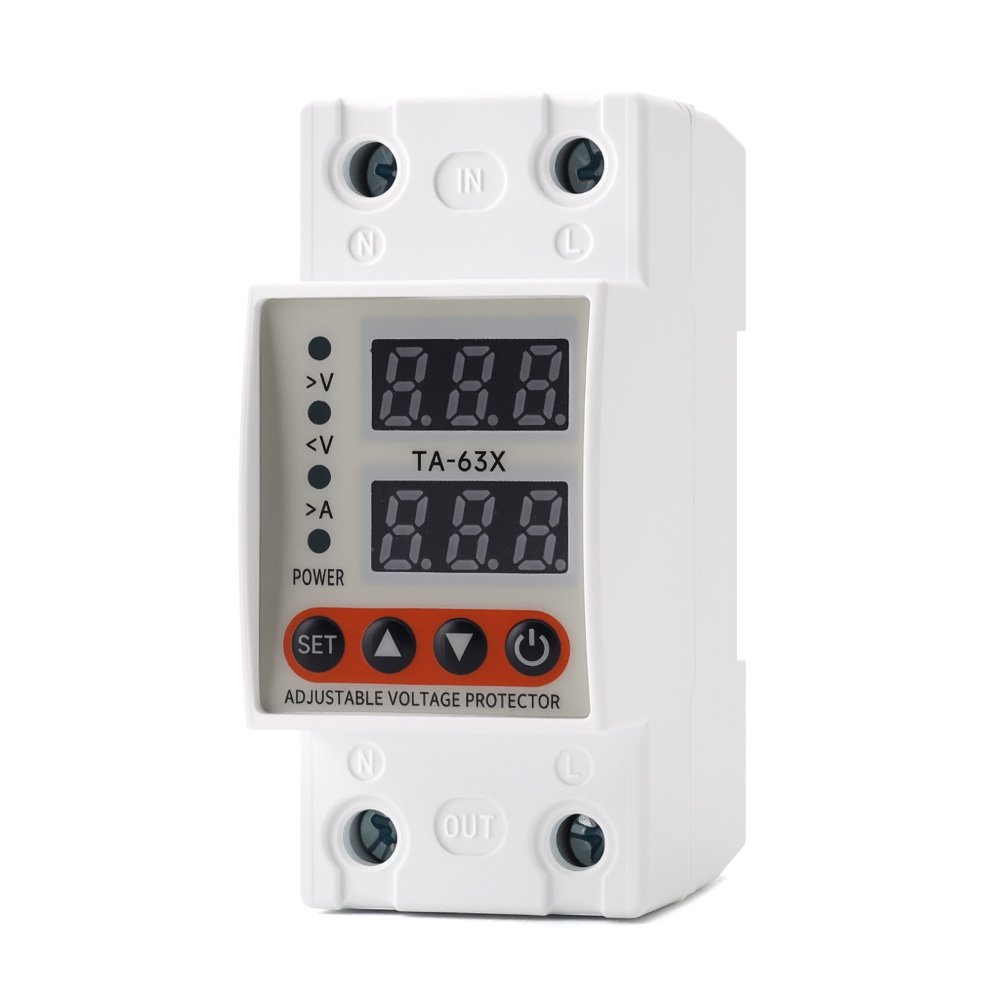Over and Under Voltage Protector
Our Over and Under Voltage Protectors offer reliable protection by automatically disconnecting power during voltage faults and restoring power when normal levels return. Ideal for household and industrial use, they prevent damage from voltage fluctuations and enhance electrical safety.
Definitions of Over and Under Voltage
Over Voltage
Over voltage occurs when the voltage rises above the safe operating limit of a device or circuit. Each electrical device has a specific voltage rating, and going beyond this can cause damage, excessive heat, or fire. Common causes include:
Power system faults like transformer breakdowns or short circuits.
Lightning strikes causing sudden high voltage surges.
Voltage spikes during power restoration after a major outage.
Under Voltage
Under voltage happens when the voltage falls below the required level for a device to work properly. This may prevent devices from starting or functioning right and can also cause harm. Typical causes are:
Overloaded circuits where demand exceeds supply capacity, causing voltage to dip.
Problems in power supply such as damaged lines or faults at the source.
Failures in electrical equipment that lead to voltage drops.


Working Principles
Over and under voltage protectors operate by monitoring and managing voltage levels. The main parts include:
Sensors: Continuously measure voltage in real time. If voltage goes beyond set limits, they send signals to the control unit.
Control Unit: Receives sensor signals and checks whether voltage is abnormal. If so, it activates protective actions.
Relays: On command from the control unit, relays disconnect the circuit to protect devices.
Over Voltage Protection
If voltage rises above the preset upper limit, the sensor detects this and alerts the control unit. The control unit then instructs the relay to cut power, stopping current flow to devices. An alarm may sound to inform the user.
Under Voltage Protection
When voltage falls below the preset lower limit, the sensor signals the control unit. The control unit responds by disconnecting power through the relay to avoid device problems. An alarm may also notify the user of the issue.


Functions of Over and Under Voltage Protectors
Over and under voltage protectors mainly serve to track voltage levels and shield electrical devices from harmful voltage fluctuations. Their key roles include:
Constantly monitoring voltage to quickly detect over or under voltage situations.
Automatically cutting off power to prevent damage when abnormal voltage is found.
Triggering alarms, either sound or light, to warn users of voltage issues for prompt action.
Protecting devices by keeping their voltage within safe limits, which helps prolong their life.
Types of Over and Under Voltage Protectors
Over and under voltage protectors vary to fit different needs. Common types include:
Mechanical Protectors
These use mechanical switches or circuit breakers. They are simple and ideal for basic voltage protection.
Electronic Protectors
These rely on electronic components to monitor and manage voltage. They offer more precise protection, quicker reaction, and customizable settings.
Adjustable and Fixed Protectors
Adjustable Protectors: Allow users to set voltage limits based on specific equipment needs.
Fixed Protectors: Have set thresholds and are designed for particular applications.


Application Scenarios
Over and under voltage protectors are used in many areas to guard electrical devices. Common uses include:
Residential Electrical Systems
In homes, these protectors help safeguard appliances like refrigerators, washing machines, and air conditioners. They keep devices within safe voltage ranges to avoid damage from voltage shifts.
Industrial Equipment
In factories and industrial sites, protectors shield sensitive machines from voltage changes. This helps prevent breakdowns and ensures safe operations.
Renewable Energy Systems
In solar power setups, these protectors protect key equipment like inverters from voltage fluctuations, maintaining system stability and reliability.


Installation and Maintenance
Installation Requirements
Proper installation is key for over and under voltage protectors to work well. Follow these guidelines:
Select a dry, well-ventilated spot to prevent moisture and heat damage.
Connect wiring carefully according to the manufacturer’s directions for safe and firm connections.
Maintenance Recommendations
Regular upkeep is important to keep protectors functioning correctly:
Test the device monthly using the test button to verify it trips during abnormal voltage.
Inspect the protector visually for any damage or signs of wear.
Have a qualified electrician perform a full inspection of the protector and electrical system at least once a year for safety.

